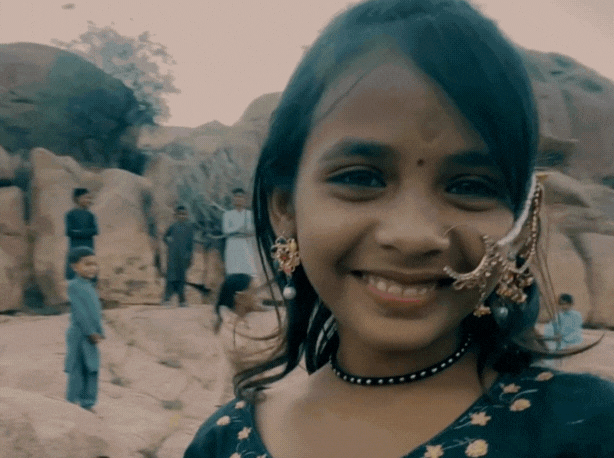
From Within the Mountain
A Visual Journey through Karoonjhar by Pakkhee

.png)
Rooted in the sacred granite folds of Karoonjhar, this archive offers an intimate witnessing — a collaborative act between local photographer Dileep Permar and artist-curator Pakkhee, who threads field notes, translations, and visual fragments into a living portrait of the mountain.
This is not merely a landscape. It is a breathing ancestor.
Through image and memory, the collection invites you to listen to the stones that remember, to the wind that carries forgotten names, to the silences between footfall and folklore. In a time of environmental, cultural, spiritual erasure — this work stands as an offering:
A remembering.
A resistance.
A quiet call to protect Karoonjhar, not just for us, but for all those yet to arrive.
.png)

.png)
.png)
.png)
This is where the mountain breathes.
Its ridges are not just contours, they are gestures of memory.
Its waters wait, carrying the weight of absence and return.
Its stones, once carved and prayed upon, remain, not as ruins, but as rememberings.
In this first passage through Karoonjhar, we trace the visible body of the mountain, its landscapes, waterscapes, and sacred architecture.
This offering is a way to listen // a conversation between land and life.
A witnessing of what the mountain continues to hold.

What does the desert remember
.png)
when it blooms?

Wild Growth and Harvested Fields:
The Dual Heartbeat of Nagarparkar
The Alchemy of Healing & Sustenance
“What does the desert remember when it blooms?”
In Karoonjhar, every green shoot is a memory, of rain, of rhythm, of reverence. The people of Thar and Parkar have learned to move with the rhythm of the land. Most here are farmers who do not fight the scarcity of water, but shape their lives around its pulse, collecting, conserving, and planting in harmony with the seasons.
Scattered across these mountains are wild herbs, many of them ayurvedic, medicinal, and sacred. Passed down through oral knowledge, these plants have healed bodies and spirits for generations. But some now face quiet threats: overharvesting, sometimes even by local hand, shifting climates, and the loss of natural habitat due to mining. The granite of Karoonjhar, long known to help store rainwater, is being extracted at a cost not just to geology, but to the delicate systems it sustains.
Still, the tarap ,that deep longing for bloom, for green, remains. It finds expression not just in cultivation, but in clothing, in language, in memory. The land gives for four precious months, and for the remaining eight, its people carry that beauty within them, waiting, remembering, preparing. This is not just a place where things grow. It is a landscape of healing and sustenance, shaped by those who have listened, adapted, and remembered. We invite you to explore Karoonjhar's wild blooms and farms with us.
.png)

To walk here is to walk with care.
Life hums beneath every stone, flutters between blossoms, and grazes gently across the land.
From butterflies and beetles to cattle and camels, Karoonjhar holds within it a world in motion. Subtle, sacred, shared.
This is not just a place of creatures, but of deep coexistence. The Jain sages who once made their home in these hills, as remembered by Pundit Chaturlal, moved through the world with reverence. They avoided even striking metal against stone. careful not to harm the smallest beings, the unseen lives underfoot. In their silence was a kind of listening.
That care is mirrored in the mountain’s biodiversity.
Artist Statement
Areesha Khuwaja & Dileep Permar
In Echoes of Karoonjhar, our collaboration brings together two lenses: one rooted in archival care, the other in visual mythmaking. Dileep Permar walks the land like a living index — holding stories of its people, festivals, wildlife, and sacred rhythms with the quiet care of someone who belongs. Areesha Khuwaja works through an ethnographic and creative archival lens, re-membering Karoonjhar as a site of layered sacredness, erasure, and survival. Her practice bridges cross-border interviews, ecological grief, oral storytelling, and myth-making by animating what official histories leave out.
Together, we treat Karoonjhar as a living, shape-shifting archive — not just of human memory, but of land-based cosmologies. Our work moves across time: from the kohl-stained ponds of Parinagar to the contemporary grief of granite extraction. We try to listen for what the land remembers, even when people are made to forget.
This collaboration is a refusal of erasure, a map, a way of seeing, sensing, and re-membering for those who will come after us.










